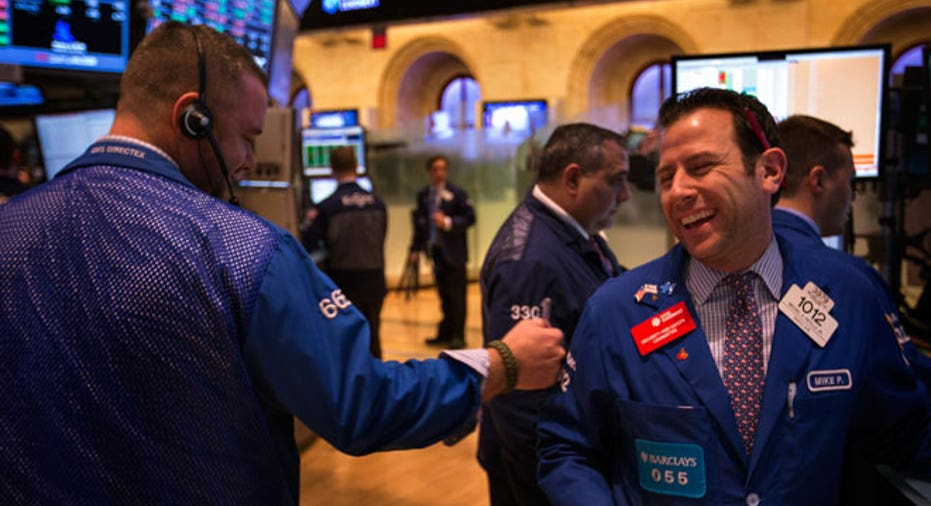Despite Robust 1Q, History Shows Stocks Have More Room to Run

In the face of renewed eurozone concerns, sequestration and sluggish growth, the Dow Industrials notched new all-time highs last quarter by generating a stellar advance of 11.25% -- the strongest first quarter since 1998 for the blue-chip barometer.
That emphatic performance has left some wondering if the markets have any juice left for the rest of the year, especially given the continued slow-growth environment. However, an analysis of historical trends suggests those concerns may be overdone. Following a positive first quarter, S&P Capital IQ says that the S&P 500 posts a positive return for the rest of the year 85% of the time, compared with 74% for all years.
History also shows that the strongest three sectors during a positive first quarter continue to outperform the broader markets at an impressive clip throughout the rest of the year.
Celebrating its fourth birthday in March, the bull market capped off the first quarter last week with both the Dow and S&P 500 at all-time highs as concerns about the bailout of Cyprus continued to fade.
“It was an extraordinary quarter for U.S. equity markets, one characterized by record highs, participation by all major sector categories, and a shift to positive flows among mutual funds,” David Joy, chief market strategist at Ameriprise Financial (NYSE:AMP), wrote in a note to clients on Monday.
Picking up 1,474 points, the Dow Industrials enjoyed their strongest overall quarter since the fourth quarter of 2011. The rally marked the 66th time in the benchmark index’s 116-year history that it ended the first quarter with a gain.
The strong first-quarter was highlighted by double-digit advances from rebounding tech company Hewlett-Packard (NYSE:HPQ) and card giant American Express (NYSE:AXP), which rallied 67% and 17%, respectively.
Room Left to Run?
But some strategists are calling for a pullback now that the first quarter is in the books and as investors brace for earnings season, which commences early next week with results from Alcoa (NYSE:AA).
Even if a correction comes, history shows that the markets almost always tack onto their gains following a green first quarter. In fact, the S&P 500 hasn’t squandered a positive first quarter by landing the year in the red since 2002.
The returns are also stronger, with the broad index rising an average of 8.9% during those final nine months, up from 6.1% normally. Such a rally would carry the S&P 500 to 1709 by the end of 2013 from its close at 1562.17 on Monday.
Of course, there’s no guarantee history will repeat itself this year as the current rally could be scuttled by signs the Federal Reserve is taking its foot off the easy-money accelerator, a deepening of the eurozone crisis or a geopolitical event in the Middle East or Asia.
Offense Led by Defense
Skeptics of the current bull market note that this year’s rally has been led by the traditionally-defensive sectors of health care, consumer staples and utilities, which climbed 15.2%, 13.8% and 11.8%, respectively.
The advance in the health-care world was highlighted by a 48% surge for biopharmaceutical company Celgene (NASDAQ:CELG) and a 46% leap for hospital operator Tenet Healthcare (NYSE:THC).
On the other hand, more economically-sensitive sectors like technology, materials and energy have all gained less than 10% each.
Sam Stovall, chief investment strategist at Capital IQ, believes this defensive strength has been driven by reluctant retail investors tiptoeing back into equities by scooping up dividend-yielding safe sectors amid record-low interest rates.
“They are willing to go to the amusement park, but only if they can ride the merry-go-round, rather than the roller coaster,” Stovall said in a note to clients. “That way, they possibly reason, should the market digest its recent gains shortly after they have decided to buy back in, they won’t lose as much had they bought into the cyclical sectors.”
Those high-performing sectors may be poised to extend their gains through the rest of 2013, especially with the Fed projecting gross domestic product growth of just 2.3% to 2.8% this year.
Since 1990 the top three sectors following a positive first quarter have built on their gains 93% of the time, generating an average jump of 12.1%. By comparison, the best three sectors advanced 78% of the time in the final three quarters in all years, rising an average of 8.4%.
“Should this year be similar to others that started strongly, and there’s no guarantee it will, don’t be surprised by further market gains and strength in the defensive sectors,” Stovall said.



















